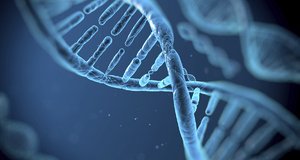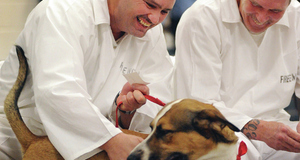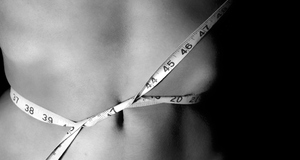Shedding New Light on Acne: The Effects of Photodynamic Therapy on Propionibacterium acnesMaterials and MethodsPreparation of Growth Media Before starting the experiment, bacterial cells were grown in vitro. The specific media used for P. acnes bacteria is known as brucella media (named after the bacterial genus brucella). Brucella media was used because previous studies had found it most favorable for P. acnes’ growth (Burns, 2009). Brucella media is a fairly common type of growth culture that consists of 10g/L of pancreatic digest casein, 10 g/L beef pellets, 1 g/L dextrose, 2 g/L yeast extract, 5 g/L sodium chloride, 0.1 g/L sodium bisulfate—all essential components for proper bacterial growth. The media was autoclaved—sterilized at high pressure saturated steam at 121°C—so that no type of contamination would distort the results of the experiment. Along with liquid media, bacterial cells grow on the surface of solid media as well. Solid brucella medium is made by adding 15 g/L agar (a solidifying agent) to the recipe listed above. The media is poured into petri dishes—small shallow plastic dishes. Cells are spread onto the media and incubated at 37°C for one to five days. Viable bacterial cells then grow as colonies—represented as a visible cluster of single, genetically pure, bacteria cell. It is the number of bacterial colonies that will be compared for each treatment.Preparation of P. acnes Bacterial Cultures The first part of this experiment analyzed the various ways by which the effects of PDT on P. acnes can be enhanced. For this test, a new bacterial strain was obtained in lyophilized (freeze dried) form from Presque Isle Cultures—a company that merchandizes microbial cultures. The bacterial strain had been freeze dried for preservation and ease of transport. In order to grow the bacteria, the lyophilized pellet was rehydrated in 250μl of brucella media. Then 10μl of the rehydrated bacteria were placed into twelve sterilized growth test tubes that contained 3 mL of liquid brucella media. Bacterial cells are capable of growing and replicating rapidly within these growth media. Then the culture tubes that contained the brucella media, as well as the rehydrated bacterial cells were all labeled New Cultures (NC). The tubes were then placed in an anaerobic chamber with a BD Gas-Pak EZ Anaerobic Container System Sachets. The anaerobic chamber and the Gas-Pak are simply a means of generating an anaerobic environment—a surrounding that lacks any sort of oxygen molecules—similar to that of the skin microbiota. The bacterial culture test tubes in the anaerobic chamber were then placed in a 37°C incubator(human body temperature)for seven days. Following the seven day growth period, all the bacterial culture tubes were removed from the 37°C incubator and tested for their susceptibility to photodynamic therapy by means of laser treatment. Testing of P. acnes’ Susceptibility to Photodynamic Therapy Before analyzing the effects the different variables had on the susceptibility of the bacterial cells, the NC (New Culture) bacteria were treated with photodynamic therapy under normal conditions. This was done after washing the bacterial cultures. To start with, 1.5ml of the 3ml liquid culture was moved to a sterile microfuge tube. The tube was labeled and centrifuged at 13,300 rpm for five minutes. The microfuge tube was then removed and the supernatant—the liquid that resides over the pellet—was discarded. The pellet in the tube was washed once by mixing it with 1ml of sterile water. The solution was centrifuged for one minute, the supernatant was discarded, and the remaining pellet was re-suspended with sterile water. The optical density was adjusted to equal 1.0 at 600nm. In this way, the washing of the bacterial culture isolated the bacterial cells from the surrounding molecules, ensuring that no other factors—aside from the innate porphyrins found in the P. acnes cells—would contribute to the effects of PDT. Directly prior to subjugating the bacterial cells to PDT, scientific controls were plated on the brucella pates. Controls serve as a standard of comparison between two groups that are identical except for one factor—the variable in question. Thus, the bacterial cells plated just prior to illumination (PDT treatment) serve as a standard by which the illuminated bacteria can be compared to. And because both bacterial cells have undergone the same exact processes—save for illumination—any difference between their colony growths can be attributed to the effects of PDT. 10μl of the washed yet un-illuminated bacterial solutions were diluted to a concentration of 10-6. Dilutions were made to make counting colonies on brucella plates easier. 200μl of the bacterial dilution was plated onto brucella plates and sealed with parafilm (a self-sealing, moldable and flexible film) to prevent contamination. The control plate was then placed upside down (to prevent condensation) in an anaerobic chamber, along with a Gas-pak and incubated at 37°C for 24 hours. The plates were removed from the incubator after the 24 hour period. Then the colonies were counted and their morphology was documented. Thus, the number of colonies found here would base the standard by which the susceptibility of the illuminated bacteria can be compared to. Photodynamic therapy was applied on the bacterial cells by means of laser illumination. It had been determined by the spectra of coproporphyrin III dihydrochloride (CIIID) that one of the most effective wavelengths of light for photodynamic therapy was 632.8nm (red light) (Thoreson, 2010). Thus, samples of P. acnes cells were illuminated using a 1.0 mW Metrologic helium-neon laser with a beam wavelength of 632.8nm at room temperature (22°C). In order to illuminate the bacteria, 300μl of the washed cells were placed in brand new 1.0cm plastic cuvettes and were covered with parafilm to prevent contamination. The cuvettes were positioned 23.5cm from the beam so that the laser beam could illuminate the entire sample. The bacterial cells were illuminated for 300 seconds. Then the bacteria were diluted, plated, incubated, counted and analyzed in the same manner as above. The number of colonies found here—the illuminated New Culture plates—was then be compared to the number of colonies found on the control (un-illuminated) plates. Percent difference in survival was computed in order to determine the effects of PDT upon normal, washed P. acnes—not supplemented with any variables. This procedure was repeated 3 more times using fresh NC (New Culture) tubes. Testing for Factors that Enhance the Effects of Photodynamic Therapy The surrounding media, oxygenation, H2O2 + FeCl3 supplementation, and bacterial storage in growth media for 4 months were then tested in order to determine if each factor significantly enhances the susceptibility of P. acnes to photodynamic therapy. Factor One: Unwashed In order to analyze the effects of the surrounding growth media, fresh NC cultures tubes were illuminated in the same manner as above but without being washed. The optical densities of the bacteria ranged from 0.3 to 1.4. The controls and illuminated bacterial cells were diluted, plated, incubated, counted and analyzed as above. The procedure was repeated three more times using fresh Unwashed NC cultures. Factor Two: Oxygenation Fresh NC culture tubes were washed as before, so that only the effects of oxygen and not the surrounding molecules can be accounted for. The optical densities were adjusted to 1.0. Then 300μl of the bacterial solution was placed in a new plastic cuvette. The bacteria were saturated with Oxygen using sterile glass pipettes connected a rubber tube attached to an Oxygen tank. The Oxygen tank was turned on and oxygen gas was released directly into the bacterial solution for 120 seconds. Following oxygenation, the controls and illuminated bacterial cells were diluted, plated, incubated, counted and analyzed as before. The procedure was also repeated three more times using fresh NC cultures. Factor Three: H2O2 + FeCl3 Supplementation Prior to experimentation, a bottle of 3% hydrogen peroxide solution was obtained from the laboratory and filter sterilized using a 10ml syringe into a sterile 10ml falcon (conical) tube. Then a 10% solution of FeCl3 was diluted to a 1mM solution, filter-sterilized, and placed into a 10ml falcon tube. 3µl of 1mM FeCl3 and 100 of 3% H2O2 were added to fresh NC culture tubes. The solution was allowed to react (Haber-Weiss and Fenton Chemistry) for 10 minutes—a safe yet sufficient duration. Following the 10 minute reaction period, the bacterial cultures were washed and the optical densities of each bacterium were adjusted to 1.0. Then the controls and illuminated bacteria were diluted, plated, incubated, counted and analyzed as per usual. The procedure was repeated three more times using fresh NC cultures. Factor Four: Storage for Four months New Culture (NC) bacterial cells grown for 7 days were stored in the 4°C refrigerator for 4 months. Following the 4 month storage, the bacterial cultures were removed. The effects of duration were analyzed by testing both Washed and Unwashed (with the surrounding media) bacterial cells that had been stored in the refrigerator for 4 months. For the washed “4 month stored” variable, NC cultures were washed as before, and optical densities were adjusted to 1.0. The same amounts of diluted (10-6) controls and illuminated bacterial cells were plated. The plates were incubated in 37°C for 24 hours. Then the bacterial colonies were counted, and the colony morphology was documented. This procedure was also repeated three times using fresh NC cultures. The “4 month stored” unwashed NC cultures were tested in the same manner as “factor one: surrounding media”—the sole difference was the length of days the bacterial cultures were placed in the refrigerator. This procedure was also repeated three times using fresh NC cultures. Testing for P. acnes Propensity for Resistance In order to test for P.acnes’ propensity for resistance, three bacterial strains from a previous experiment by Anders Thoreson were used (Thoreson, 2010). The bacterial strains were obtained from -80°C freezer stocks. The three separate freezer stocks contained P. acnes cells that had never been illuminated (labeled Old Cultures, or OC), ones that had survived red light illumination (labeled Red Cultures, or RC), and some that had survived blue light illumination (labeled Blue Cultures, or BC). An ample amount of each of the frozen bacterial cells was inoculated using sterile toothpicks into sterile culture tubes with 3 ml of brucella liquid media. The tubes were labeled Old Cultures (OC), Red Cultures (RC) and Blue Cultures (RC). Eight culture tubes were prepared for each of the bacteria in order to ensure enough cells were grown for the duration of the experiment. Following inoculation, the culture tubes, along with a control tube with just media, were allowed to incubate in an anaerobic chamber in 37°C for seven days Following the seven day growth period, the culture tubes were removed from the 37°C incubator. Then the bacterial cells propensity for resistance was analyzed by determining if the bacterial strains that had previously undergone treatment with PDT (RC and BC) would die at the same rate as the bacterial strain that had never been exposed PDT (OC). All three strains of bacteria were illuminated under normal conditions (washed), in the presence of their surrounding media (factor one), oxygenated (factor two), and after being supplemented with H2O2 + FeCl3 (factor three). The process of illumination, plating—both controls and illuminated bacteria—counting and overall analysis proceeded as above. The colonies on the control and illuminated plates of all three strains of bacteria were counted, their morphology was documented. This was repeated 3 more times. Then, the percent survival of the RC and BC colonies was compared with that of the OC strain to determine if there was significant resistance. Statistical Analysis: T-test All the colonies for each bacterial strain and each factor were counted, and percent survival was computed using the bacteria’s respective controls. Then a t-test was conducted to determine if the PDT effects upon susceptibility, the various factors’ effects upon PDT, and P. acnes’ potential resistance were significant or not. A t-test is a statistical hypothesis test that is used to determine if two sets of data are significantly different from one another. The null (initial) hypothesis is that there is no difference between the two sets of data, and any difference is indicated by a P-value—a value that indicates whether it’s probable to reject the null hypothesis based on a predetermined significance level α, which is 0.05 in this experiment. Thus any P-value less than 0.05 obtained in a t-Test between two different sets data will be considered significantly different. Following t-test generation, a standard deviation (SD), which indicates the dispersion of a set of data from its average, is computed. The standard deviation describes how spread out or consistent the values within a single set of data are.Continued on Next Page » Suggested Reading from Inquiries Journal
Inquiries Journal provides undergraduate and graduate students around the world a platform for the wide dissemination of academic work over a range of core disciplines. Representing the work of students from hundreds of institutions around the globe, Inquiries Journal's large database of academic articles is completely free. Learn more | Blog | Submit Latest in Biology |
















